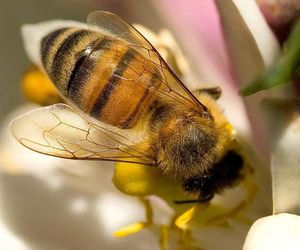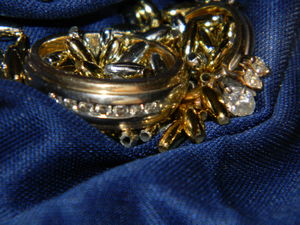I thought they were called boring bees. That was after I realized they were not bumble bees! Bumble bees usually nest in the ground and these were above my head! I did not call them boring bees because they didn’t fascinate me! I was astonished by their abilities. Their main talent, and the reason I thought they had the name boring bee, was the ability to bore precise holes into wood. The holes look exactly like someone with an electric drill complete with a half inch drill bit attacked the fascia boards of my house! A little more investigation helped me to discover that these pesky creatures are called carpenter bees. I think this is really a misnomer, because they have very little carpentry ability other than drilling holes. I think boring bees suits them much better.
Carpenter bees, to be accurate, can cause a lot of damage to your home. They create precise half inch holes into your fascia boards, roof eaves, porches, railings, and any exposed wood they find attractive. Research indicates that they prefer untreated wood, but paint, stain or varnish need not deter the persistent female seeking to build her nest. The bad news is that her new home can be a roomy ten foot long tunnel into your home!
A tennis racquet took out the first few bees we noticed hovering above our heads while out at the pool. Since the carpenter bees we noticed hovered consistently at about the five foot level in the same spot by the back door, without really moving, a quick swing of the tennis racquet helped the grandchildren to be less frightened to venture outside. However, we soon discovered that each slain sentry was quickly replaced with another. Another carpenter bee would appear to hover in exactly the same spot.
The carpenter bees (or boring bees) didn’t attack or seem to want to sting anybody. They apparently could convey news about the tennis racquet to each other because it wasn’t long before the mere sight of a tennis racquet sent them soaring upward to a safer hovering distance. When we backed off they came back down again to hover again at the exact mark which must have been their assigned spot for guarding the nest.
Since their persistence topped our tennis racquet extermination method we decided to do some research. We realized we first should know if the carpenter bee had some useful purpose. Perhaps these boring bees were something we shouldn’t kill. Website after website and article after article described them as nuisances and destructive pests. Most reading confirmed that they cause damage to your home and dealt with methods to get rid of them. I only found one reference to their importance as pollinators of flowers and trees.
We learned that the bees flying around our heads on the deck were most likely male. Their job is to guard the nest while the female does the actual interior decorating. Often they come back each year to refurbish an old nest rather than chew out a new one. The males are territorial and do not have a stinger, which the grandchildren were glad to hear. Although we still have running and screaming when one is spotted. This is probably because we also told them that only the female has a stinger, but none of us knows how to tell a male from a female. Even the female carpenter bee won’t sting unless you catch her and touch her. Since running and screaming at the mere sight of male or female carpenter bees is the normal reaction, we figure the chances of anyone getting stung at our house are minimal.
Some sites suggest a host of insecticides that you can use to defeat this pest. There are instructions about how and where to apply insecticides for maximum effectiveness. Since I have grandchildren around I shy away from using chemicals. The tennis racquet was traumatic enough for them. I don’t want to make them sick.
The least militant way of asking the bees to stop their damage is to plug up the entrances to their new home. You can use caulk, wood putty or wood glue a dowel or wedge to block the entrance from being used. Since these products contain chemicals compounds the bees will usually not chew through them. One article I read said that a resourceful bee may simply chew a new entrance. At that point, if something wants to live that badly, I have to give it to them. Although, if it becomes a real war, there is only a single female in each nest, so if you find her and take her out, you win. Whatever you decide, whether to let them pollinate the plants, or to evict them, good luck.








